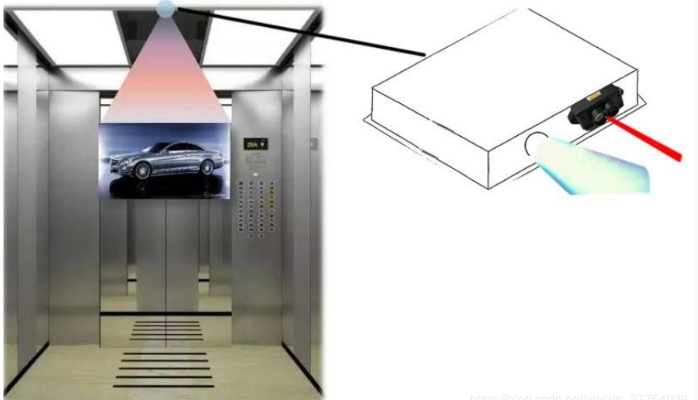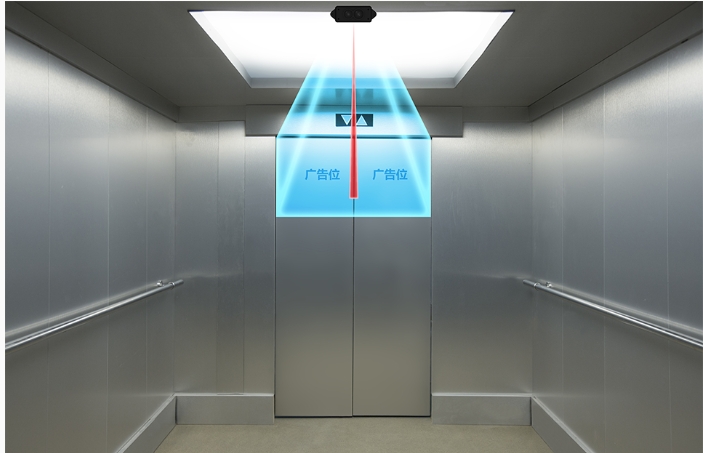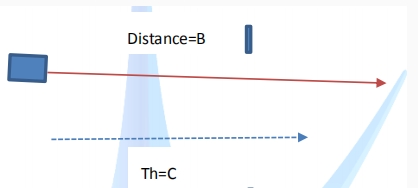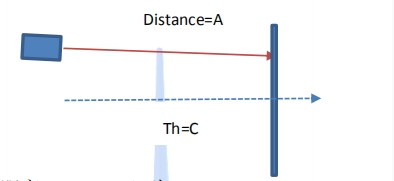Introduction
The application of projectors in elevator cabins to display advertisements and videos to passengers is gaining popularity. These projectors face the elevator doors and project content when the doors are closed, turning off the projection when the doors open. The LiDAR sensor M1can be embedded within the projector system to detect the elevator door’s status in real-time and control the projector accordingly.


Principle of Operation
When the elevator doors are closed, the HPS-3D160PRO measures the distance from the inside of the cabin to the doors. When the doors are open, it measures the distance from the inside of the cabin to the outer environment. By differentiating these two distances, the system can determine whether the doors are open or closed and control the projector’s on/off state.
A distance threshold (Th) is set, which is greater than the distance between the inside of the cabin and the closed doors (A) but less than the distance between the inside of the cabin and the external environment (B). The principle is illustrated below:


- Distance A: Distance when the doors are closed.
- Distance B: Distance when the doors are open.
- Threshold (Th): A fixed, adjustable value such that A < Th < B.
When the measured distance (Distance) is less than Th, it indicates that the elevator doors are closed, and the projector should turn on. Conversely, when Distance is greater than Th, it indicates that the doors are open, and the projector should turn off. This real-time monitoring ensures the projector only operates when the doors are closed, enhancing the viewing experience and energy efficiency.
Application Development Scheme
To facilitate the monitoring of the elevator door status, the measured distance values can be converted into a binary switch state, making it easier for the projector controller to read. The LiDAR can utilize a conversion board to translate these distance values into switch signals, which can be customized based on specific requirements.
The installation height and position of the projector should consider the actual environment of the elevator. It should be installed at an inclined angle in a higher position to prevent the projection light from being blocked by passengers. Additionally, the LiDAR’s emission angle must ensure that the laser beams are not obstructed by the edges of the elevator doors.
To avoid the projector from malfunctioning due to rapid fluctuations in distance values, a protection function can be added. This function will require that the distance condition be met continuously for a set number of readings (n) before the projector changes its state. However, to maintain responsiveness, the value of n should not be too large.
Conclusion
Integrating the CPJ LiDAR M1 sensor into elevator projectors enhances the system’s ability to accurately detect elevator door status and control the projection accordingly. This application not only improves the viewing experience for passengers but also optimizes energy usage by ensuring the projector operates only when necessary. By implementing the outlined development scheme, this solution can be effectively tailored to different elevator environments, providing a robust and efficient advertising platform.







